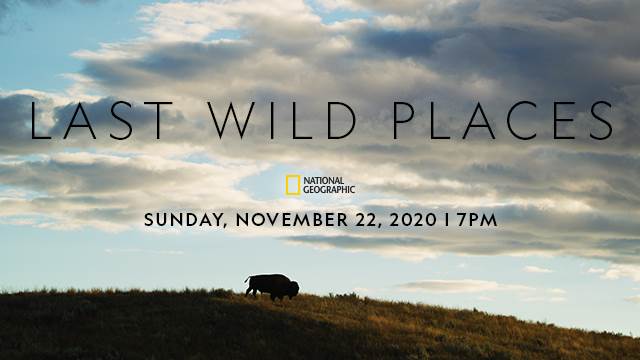Event Recap: National Geographic’s “Last Wild Places: Rewilding the Americas”
There’s no denying that mankind has had a big impact on the earth. Even if you don’t believe we’re impacting climate change, you can’t deny that we have shaped the land, overhunted certain species, and brought about irreparable harm in some ways. But is it really irreparable? There may be hope, as National Geographic is proving through their Last Wild Places campaign. On November 22nd, a virtual event celebrated some of the project’s milestones with a screening of two short films and a Q&A with some of the participants.
Last Wild Places: American Prairie Reserve
The first film shown was called Last Wild Places: American Prairie Reserve which documents an area in Montana where Native Ameircans are trying to restore what once was lost. In the short film, a teacher named Kenneth “Tuffy” Helgeson shares how buffalo are an important part of the Dakota people’s and how settlers pushed them out to make room for cattle. The short covers how public and private land was combined to create a space where buffalo could be reintroduced with natural borders.
After watching the film, Executive Producer Vanessa Serrao was joined by Alison Fox (CEO, American Prairie Reserve) and Kenneth “Tuffy” Helgeson (Vice Chairman, Island Mountain Development Group) to talk about the film. The shared that the American prairie is one of the most endangered ecosystems and the least protected biome in America. The grasses and root systems are the foundation of the ecosystem and the biggest threats are plows and tillers. The American prairie includes over 300 species of birds, 100 species of mammals, and 100 species of plants unique to the area. Combined, they help to sort carbon and contribute to clean air and water in the Midwest. The conversation and film also included the link between indiginous people of the area and restoring the prairie.
Last Wild Places: Iberá National Park
The second short film screened was called Last Wild Places: Iberá National Park in the northeastern part of Argentina. It’s the biggest South American wetland where lots of species went extinct in the wild due to hunters, all during the last century. The documentary shows the amazing people committed to restoring these lost species in the wild, which have included giant anteaters, giant otters, and macaws. In the case of the birds, you see trainers teaching them how to be wild again so they can be released and make Iberá their new home. It also covers the struggle of restoring the top predator to the area, jaguars, and how challenging that is.
Executive Producer Vanessa Serrao returned, this time joined by Sebastián Di Martino (Conservation Director, Fundacion Rewilding Argentina) and Kristine Tompkins (Co-Founder and President, Tompkins Conservation) to talk more about the important work they’re doing. They focused on how conservation stories are often about loss due to humans, but this is a story about humans being responsible for the revival. A fun update they shared is that they’ve seen macaw chicks in the park, which makes their hard work feel all the more impactful.
Updates on Both Projects
The virtual event ended with an update on the progress of both projects. Filming at the American Prairie Reserve concluded in November 2019 and since then, another herd of bison was introduced to the prairie. As recently as September, the two Native American tribes depicted in the short released twenty-seven swiftfox back to the planes. They’ve been missing from the area for over fifty years and are another important part of their native culture. The Smithsonian was an instrumental part of helping to bring them back.
In Iberá, one of the giant anteaters in the short has given birth to her second cub. Just last week, they also got an update on the jaguars released when one of the camera traps caught pictures of a female jaguar with two cubs. The team doesn’t know the gender of the cubs and likely won’t, letting nature run its course from this point forward. They also gave more insight into releasing the jaguars, which had to be raised by their mom in a large enclosed space without human interaction so they could be wild enough to survive on their own.
They also talked about how both projects are working to engage residents who live nearby and get them active in wanting to protect and conserve the area. In Iberá, locals are being taught that animals like jaguars are worth a lot more to them alive then hunted and sold as trophies. And in Montana, a tourism industry is forming where visitors are encouraged to take a trip to see the great American prairies restored to their original glory.

